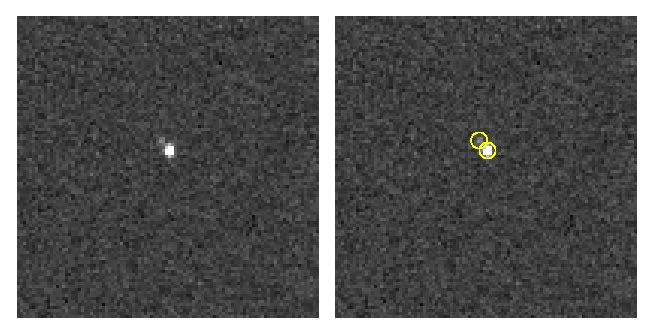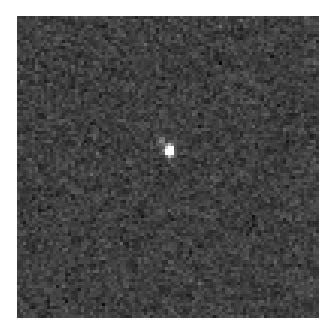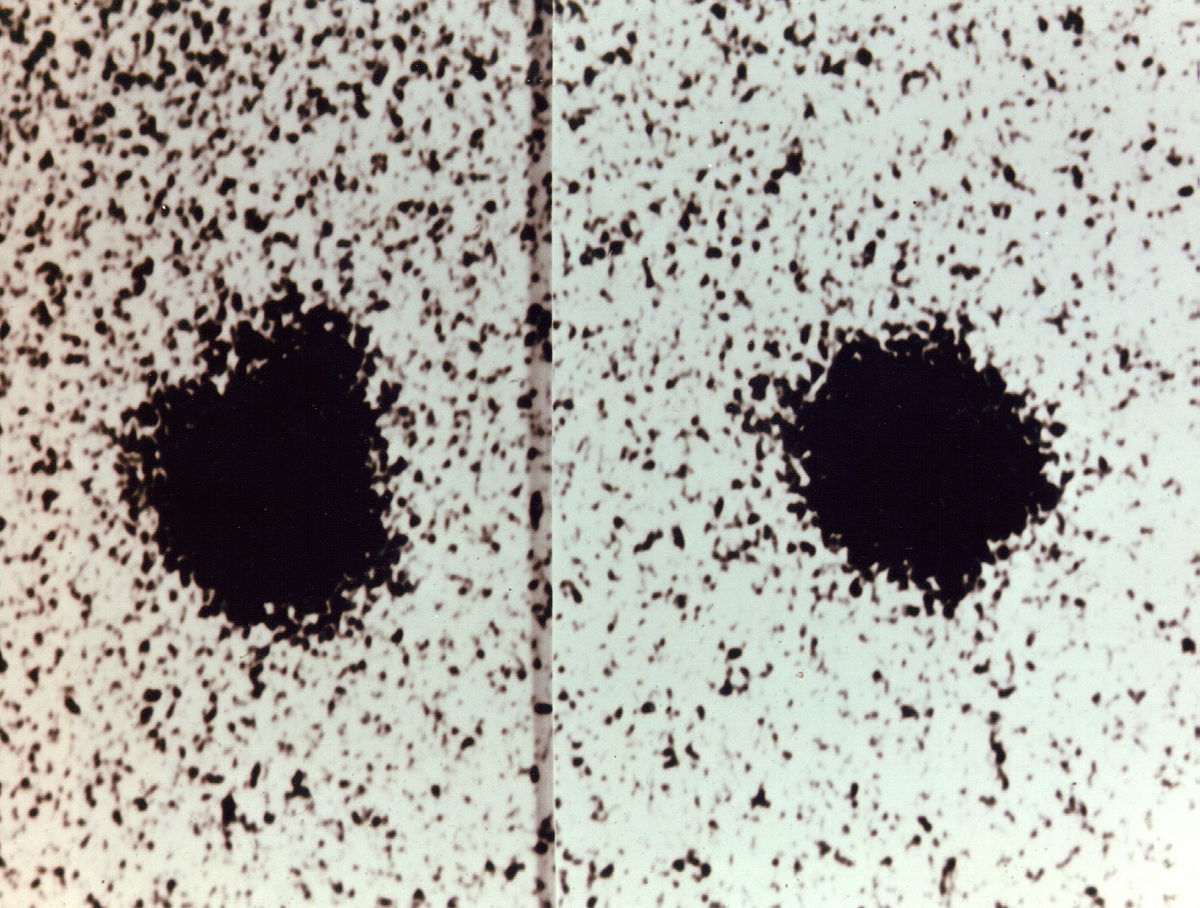NASA Spacecraft Photographs Pluto's Largest Moon Charon

A NASA spacecraft bound for Pluto has captured its first photo of the dwarf planet's largest moon Charon, a cosmic snapshot snapped from nearly 550 million miles away.
The new Charon photo was taken by NASA's New Horizons spacecraft, which is closing in on Pluto and due to fly by the icy world in July 2015. The black-and-white image shows Charon as a dim object that is near, but clearly separate from, the brighter object that is Pluto.
NASA unveiled the new Charon photo Wednesday (July 10), hailing the image as a "major milestone" for New Horizon's 9 1/2-year trek to Pluto. [See more photos of Pluto and its five moons]

"The image itself might not look very impressive to the untrained eye, but compared to the discovery images of Charon from Earth, these 'discovery' images from New Horizons look great!" said New Horizons project scientist Hal Weaver of Johns Hopkins University Applied Physics Laboratory, Laurel, Md. "We’re very excited to see Pluto and Charon as separate objects for the first time from New Horizons."
Pluto has five known moons: Charon, Nix, Hydra, Styx and Kerberos. Charon is the largest of the five and orbits Pluto at a distance of about 12,000 miles (19,000 kilometers). It is about 750 miles (1,207 km) wide and was discovered in 1978 by astronomers using the Kaj Strand Astrometric Reflector at the U.S. Naval Observatory’s Flagstaff Station noticed a visible "bump" moving around Pluto, New Horizons mission scientists explained.
The four other moons of Pluto were discovered in images taken by the Hubble Space Telescope. The official names for Styx and Kerberos, which were formally called P4 and P5, were unveiled last week.
New Horizons scientists used their spacecraft's LOng Range Reconnaissance Imager, called LORRI, to take the new Charon photos. The camera took six different photos of Charon and Pluto, which scientists used to create a single composite view of the dwarf planet and its biggest moon.
Get the Space.com Newsletter
Breaking space news, the latest updates on rocket launches, skywatching events and more!
"In addition to being a nice technical achievement, these new LORRI images of Charon and Pluto should provide some interesting science too," New Horizons principal investigator Alan Stern of the Southwest Research Institute in Colorado said in a statement.

Because of the unique angle of the New Horizons photos, they may hold new clues into the surface properties of Charon and Pluto, including the potential for a layer of fine particles blanketing their surfaces, New Horizons officials explained.
NASA launched the $700 million New Horizons mission in January 2006. Currently, New Horizons is about 550 million miles (880 million km) from Pluto. But it will be much closer on July 14, 2015, when it makes its closest approach to Pluto and its moons. On that day, the spacecraft zoom within 7,750 miles (12,500 km) of Pluto and should provide spectacular views of the dwarf planet and its moons.
"We're excited to have our first pixel on Charon," Stern said, "but two years from now, near closest approach, we'll have almost a million pixels on Charon – and I expect we'll be about a million times happier too!"
Editor's Note: This story was corrected to reflect the proper diameter of Charon (750 miles/1,207 km).
Email Tariq Malik at tmalik@space.com or follow him @tariqjmalik and Google+. Follow us @Spacedotcom, Facebook and Google+. Original article on SPACE.com.
Join our Space Forums to keep talking space on the latest missions, night sky and more! And if you have a news tip, correction or comment, let us know at: community@space.com.

Tariq is the Editor-in-Chief of Space.com and joined the team in 2001, first as an intern and staff writer, and later as an editor. He covers human spaceflight, exploration and space science, as well as skywatching and entertainment. He became Space.com's Managing Editor in 2009 and Editor-in-Chief in 2019. Before joining Space.com, Tariq was a staff reporter for The Los Angeles Times covering education and city beats in La Habra, Fullerton and Huntington Beach. In October 2022, Tariq received the Harry Kolcum Award for excellence in space reporting from the National Space Club Florida Committee. He is also an Eagle Scout (yes, he has the Space Exploration merit badge) and went to Space Camp four times as a kid and a fifth time as an adult. He has journalism degrees from the University of Southern California and New York University. You can find Tariq at Space.com and as the co-host to the This Week In Space podcast with space historian Rod Pyle on the TWiT network. To see his latest project, you can follow Tariq on Twitter @tariqjmalik.









